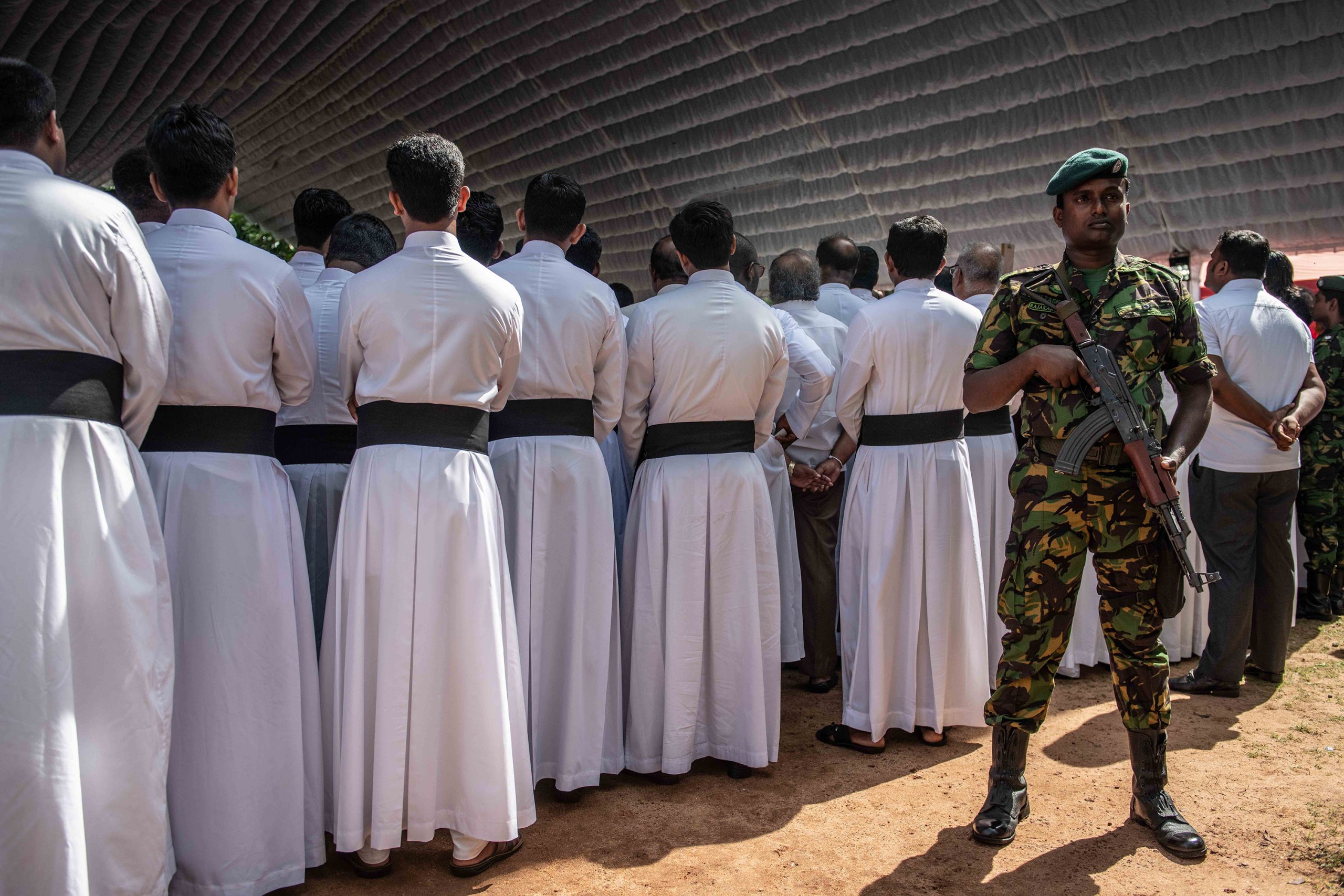Sri Lankans mourn a country at odds with itself
As Sri Lanka reels from the Easter Sunday attacks, it must also confront its history of violent atrocities, secessionist sectarianism, ethnic populism and corrosive power politics.
Author:
24 April 2019

Since Easter Sunday Sri Lanka — from its buildings to its people — has been shrouded in mourning’s colour: white.
The terrorist attacks on three hotels and three churches on the South Asian island has so far left 321 people dead and hundreds more injured. The United Nations International Children’s Emergency Fund confirmed that at least 34 of the victims of the attacks on 21 April 2019 were children.
With every detonation, the suicide bombers, who had coordinated their attacks in Colombo, Negombo and Batticaloa, returned the country to its history of violent atrocities perpetrated in the name of language, religion, ethno-nationalism, secessionist sectarianism, race, the machinations of foreign governments and political ego.
The suicidal method of the terrorists was a reminder of similar attacks perpetrated by the Liberation Tigers of Tamil Eelam (LTTE) during the country’s 26-year civil war that ended a decade ago in May. The murderous disregard for holy sites reaches far into the country’s history, into the various colonialisms it endured. It is also a throwback to attacks by both the LTTE and the majority Sinhalese Buddhist army on places of worship during the war and echoes the sectarian mob violence as recently as last week in Anuradhapura, when Buddhists attacked a Methodist Church.
Present imperfect
But the attacks have, with deadly explosiveness, also brought the country of 22-million people into direct confrontation with its fractious, unreconciled present. Face-to-face with what Samanth Subramanian, author of the impeccable This Divided Island, described this week in the New Yorker as Sri Lanka’s “combustible polity”.
The end of the civil war, or the narrow ethno-nationalist project of former president Mahinda Rajapaksa that has dominated since, have brought neither social unity nor social justice for the island. The mainstreaming of ethnic populism has ensured that, with the Tamil secessionist effort broken, there are new “others” to be held in suspicion.
In recent years Muslims have replaced Tamils as the new enemy. Last year’s anti-Muslim riots in the Kandy district triggered reprisals from Muslim youth and the government declaring a state of emergency. Two people were reported dead. Four years earlier similar anti-Muslim riots broke out on the island’s west coast.
Related article:
In Kandy last year Mahinda*, a trishaw driver, told me about the growing “Muslim problem” in Sri Lanka: they were apparently reproducing nine times more quickly than Buddhists, threatening their majority; they owned all the major businesses, to the economic detriment of the Sinhalese Buddhists; the community had links to other countries in the region with Islamic majorities like Indonesia and Malaysia, posing another extinction myth threat to the Sinhalese whose majority did not extend past the island into South Asia; they had links with Middle Eastern countries where many Sri Lankans worked, remitting salaries home in amounts that dominated the economy, posing a challenge for the island’s economic autonomy, and so on … Views that were repeated often by Sinhalese from the working class upwards.
This was a view equally shared in the north of the country, by Hindus who dominate the country’s Tamil-speaking population.
Violent historical fracturing
Under the veneer of a peaceful number-one rated tourist destination with pristine surfing beaches, verdant countryside and amazing food, are a people struggling to unravel centuries of often violent fracture in a place where the interstices and overlaps of language, identity and religion make nothing simple.
The attacks were perpetrated by a group of radicals apparently affiliated to a local Islamic fundamentalist organisation, National Thowheeth Jama’ath, with alleged assistance from Islamic State — foreign assistance.
Related article:
At Batticoloa on Sri Lanka’s east coast, the Protestant Zion Church was attacked, leaving 26 dead and over 100 injured. The area has a large Muslim population, the majority of whom are Tamil-speaking.
During a visit last year, many Tamil-speaking Muslims in Batticaloa spoke of their marginalisation by both the majority Hindu Tamil-speaking community on the island and by the Sinhalese Buddhists who make up 70% of the country’s population. They felt economically and politically marginalised.
Foreign Islamic investment in mosques and schools in the areas disregarded by Colombo’s Buddhist-dominated political elite were plain to see.
Social justice versus corruption
The social justice momentum to hold accountable those responsible for civil war atrocities has been impeded by the politics of power and corruption linked to Rajapaksa. Lawyers, aid workers and activists working in the field all expressed concern to New Frame that the terror attack would make these even more intractable while reinforcing the idea of a “new” Muslim threat.
The government quickly shut down all social media platforms after the attacks in an attempt to stymie any mobilisation around fake news, which has previously heightened sectarian violence in the country.
But allegations that President Maithripala Sirisena had kept intelligence reports red-flagging the potential and planning of these attacks from Prime Minister Ranil Wickremasinghe exposed the petty divisions within the political elite. It also raised vexing questions about the state’s failure to secure the churches and hotels attacked, despite detailed intelligence gathering, from the Indian government especially.
The aim of the social media clampdown was to curtail the trafficking of outrage in a volatile country. It may. For a while. As Sri Lanka mourns. But the sense that the country is deeply at odds with itself, with a potential for violent flare-ups, is never too far away.


